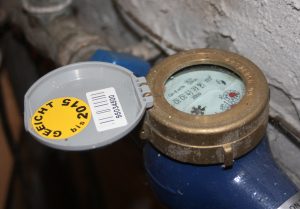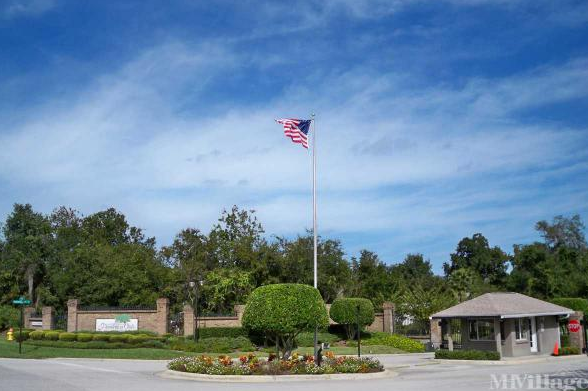Energy Efficiency is a Focal Point for Business Efficiency
Whether putting up an office building or rental community, energy is fundamental to the success of any real estate project and plays an essential role in both cash flow and valuation.

Too often, the focus is on cost first… to the detriment of operations and life cycle analysis.
Many GreenGen clients approach us to help with the engineering and implementation of energy efficiency projects that not only lower operating costs but also improve sustainability.
Generally, energy and building systems are overlooked during initial design and are addressed at the end of a project. This can create hard and soft returns with significant impact on an asset’s perception and value. The right energy solution not only will reduce operating cost, but also increase asset value.
Applicable to manufactured housing, we have assessed numerous rental developments during the past year to evaluate potential to reduce costs via energy efficiency upgrades. Assessments revealed many opportunities for cost savings and value creation, most notably around lighting efficiencies.
This was the case for a student apartment building in Tucson, Ariz., near the University of Arizona. Even though the property was relatively new, the assessment revealed a variety of ways to upgrade the controls and lighting systems and increase property value in both the units and the common areas.
Powering Down to Improve Energy Efficiency
Replacement of fixtures and lamps in a facility, as well as adding occupancy-based controls, offers a great payback for property owners. LEDs offer much better efficacy than their incandescent, fluorescent, and metal halide equivalents. Additionally, the life of an LED is up to ten times longer than the lamp and/or fixture it replaces. Using automated occupancy sensors in intermittently occupied spaces also presented another major chance to reduce costs.
Many common spaces in communities have vending areas that present savings opportunities. Snack machines often operate all day even though they are not continuously used by residents. Occupancy-based vending machine controls turn off machine lights and cycle down compressors to optimize savings while maintaining desired temperatures. Typical savings for these controls are in excess of 50 percent.
An Eye on Water Consumption is Key in Every Locale
Another savings source is to reduce water consumption. At the Tucson asset, most restroom faucets consume 2 gallons per minute. Yet, Energy Star’s recommended consumption levels are at 1.5 GPM or lower. Aerators that go down as far as 0.5 GPM are available as well. Retrofitting existing faucets with pressure controllers reduces water consumption and water heating costs by maintaining a consistent GPM flow.
 Installing efficient showerheads that prevent hot water from running down the drain while waiting for it to heat up is also a great way to save. These kinds of savings can be particularly valuable for properties that combine MH and RV occupancy, for communities that focus heavily on rentals, and in common areas at most communities.
Installing efficient showerheads that prevent hot water from running down the drain while waiting for it to heat up is also a great way to save. These kinds of savings can be particularly valuable for properties that combine MH and RV occupancy, for communities that focus heavily on rentals, and in common areas at most communities.
Energy usage fluctuates with time of day and year. For common spaces in communities, summer may see increased usage with students away from school. Owners can capitalize on these changes by optimizing building operations around occupant schedules. Using controls to optimize use and run equipment ensures that facilities can maximize savings during down times.
Controls can include simply regulating a device or managing an entire system. At a minimum, lights should have sensors that turn off or dim when no one is around. Part of the implementation strategy for occupancy sensors is that light levels meet safety requirements and that the occupancy sensors are properly located. Prime locations are corridors, elevators, common/recreation spaces and storage areas.
A well-designed controls platform means energy usage correlates with physical occupancy. For users, that means the lights are always on when and where they are present. Device controls are simply and quickly rolled. And they are designed to function with most any fixtures to take advantage of nearly immediate savings.
Double Down on The Bottom Line
Implementing these measures will significantly improve the property efficiency and decrease energy consumption and cost. At the Tucson student housing, the facility upgrades, combined with available rebates, will increase the building’s value by more than $1,827 per bed, totaling nearly $1.1 million in added value.
Developing custom solutions ensures savings opportunities for every property.
Lighting efficiencies and plug load reductions generally are at the top of the list as the lowest expense, with the bonus of quick payback. This adds value to a property or a building through increasing comfort and safety of residents, as well as improving the overall experience.
When done correctly, financial return and sustainability are not discrete, separate choices but rather byproducts of each other. They are interrelated decisions that support and catalyze one another, creating multiple opportunities to create value.
This double bottom-line approach helps property owners and managers “Operate in the Green®”.











